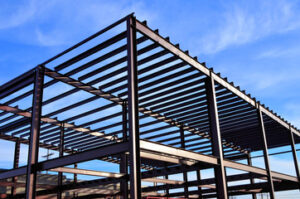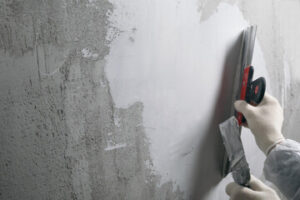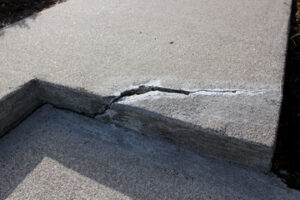Steel Buildings Oklahoma are versatile and can be used for many different types of businesses. They are also weather-resistant, cost-efficient, and expandable.

These building components are pre-fabricated in a factory, which significantly reduces construction time on site. This means that you can get into your new steel building in a shorter timeframe.
Steel buildings are an excellent option for a wide range of uses. Their versatility, speed of construction and cost-efficiency make them popular in commercial applications, such as warehouses, as well as in residential structures, including garages and sheds. Moreover, they can be used in manufacturing and agricultural applications as well. The versatility of steel buildings is a result of their prefabricated design and modular components, which make them easier to assemble and install on-site. These features also reduce the need for welding and cutting, allowing you to save time and money during construction.
Steel building manufacturers can offer a variety of customization options to ensure that your building meets the needs of your business or home. This includes layout flexibility, size variability and a choice of exterior building materials to match your property aesthetics. You can even customize the color of your steel building to help it stand out and align with your brand identity.
In addition, steel building manufacturers can provide a wide range of sizes to meet your specific space requirements. This enables businesses to easily scale up or down as their storage and workspace needs change over time. Additionally, these buildings are incredibly durable and can withstand harsh weather conditions, such as high winds and heavy snow.
Another advantage of steel buildings is their speedy and streamlined construction process, which significantly cuts down on labor costs and delivery times. This is because all components are fabricated in advance and shipped to the job site in a ready-to-assemble condition. The result is a faster occupancy rate for your new facility.
Moreover, compared to other types of buildings, steel buildings require minimal maintenance and are resistant to pests and rot. They can withstand extreme weather conditions, such as heavy snow or strong winds, and are impervious to termite infestations and mildew. Steel is also non-combustible, which means that it will not burn or be destroyed by fire.
Steel buildings are also an excellent choice for warehouses and industrial facilities because they can be erected quickly, cater to large open floor plans, and offer a lower cost per square foot than conventional warehouses. In addition, the insulated walls of a steel building can trap heat in cold weather and prevent energy loss, which can lead to significant savings on heating bills.
Flexibility
Steel buildings offer unparalleled flexibility, enabling architects to explore a broad range of design possibilities. Their strength-to-weight ratio allows for longer spans, reducing the need for columns and increasing usable space. They can also be designed to optimize natural light and ventilation, contributing to a healthier indoor environment that improves productivity and enhances well-being. In addition, they can be built to withstand extreme weather conditions.
The flexibility of steel construction offers a number of benefits for contractors, builders and do-it-yourselfers. For example, they can be fabricated at the factory and delivered to site ready for erection. This process can save valuable time and money, and it can also lead to a faster return on investment. Additionally, steel buildings can be easily modified to suit future needs.
A steel building is a good option for many types of businesses, including warehouses, auto shops, and retail stores. They can also be used for residential purposes, although restrictions may apply for some designs. These limitations are due to local building codes, homeowner associations, and other factors. However, these restrictions are often overridden by the many advantages of a steel building.
Depending on the project, there are several different phases involved in constructing a steel building. The first step is pouring the concrete foundation. This foundation is required to support the structure and ensure its stability. It also helps with drainage and prevents moisture buildup. After the concrete is poured, it must be allowed to cure for a certain period of time before construction can begin.
The next phase is assembling the pre-fabricated steel components on the building site. This is a relatively quick process, as the steel parts are fabricated to precise specifications and ready to be assembled at the site. The welded frame can then be covered with a variety of roofing materials. The steel rafter beams can also be modified to accommodate future expansion. They are typically installed at the ends of the building and are used to carry horizontal wind and seismic loads. The endwalls are reinforced with X-bracing to provide additional support.
Safety
When erecting a steel building, it is important to follow all Occupational Safety and Health Administration guidelines. This is to ensure the safety of all personnel during construction. Taking the proper precautions will prevent accidents and injuries. A few simple steps can go a long way in keeping your employees safe during the construction process.
In addition, metal buildings can be insulated with fiberglass, foam, or cellulose to protect the interior from extreme temperatures. These insulation methods are cost-effective and can help reduce energy costs. Additionally, insulation can keep pests and moisture out of the building. A well-insulated steel building will also require less maintenance and repairs, saving money in the long run.
One of the main safety features of steel buildings is their fire-resistant properties. Steel can withstand structural fires without breaking, and it is highly resistant to corrosion and mildew. This makes it a safer choice than other types of construction materials, especially for use in structures that store flammable goods or products.
Moreover, metal buildings are more resilient to seismic events than masonry and wood buildings. They are designed to flex and bend without cracking, which means they can resist the force of wind and other natural disasters. They are also impervious to damage from pests, rot, and mildew.
As a result, steel buildings are able to withstand the most severe seismic classifications. They are not only a safer option, but they can also save you thousands of dollars in repair costs.
Another safety feature of steel buildings is their ability to withstand hurricanes and other storms. These structures are able to resist wind speeds of up to 150 MPH. They are also capable of resisting ice and snow, which can cause damage to other buildings made from masonry and wood.
In addition to their strength and durability, metal buildings are also easy to maintain. They can be easily cleaned, which keeps them free from debris and rust. They can also be repainted to change the color of the structure. This is a cost-effective way to update your building and make it more appealing to potential buyers.
Cost
Steel buildings are much more affordable than other types of construction. They can also be built in shorter timeframes, which can be beneficial for companies trying to meet deadlines and get their products to market faster. The materials used in steel buildings are durable, which means that they will last longer than other building types. This durability can also help to save money on regular maintenance and repairs.
Another advantage of steel is that it can be easily modified or adapted to suit new needs. For example, if your business grows or you need to add another floor, it’s easy to do with a metal building. You can even change the interior layout of a steel building, which is a huge benefit for many businesses and organizations.
A steel building can be customized to fit a variety of purposes, including storage, offices, recreational facilities and more. The cost of a steel building can vary widely depending on its size, design, customization options, and other factors. When calculating the cost of a metal building, it’s important to consider all of these variables to ensure you get the best value for your money.
It’s also crucial to choose a reputable steel building supplier. Some suppliers will offer a low quote that seems unbeatable, but it may not be accurate. These quotes may not take into account factors such as seismic activity or snow loads, which can increase the price of your building.
Another important factor is labor costs. The labor required to erect a steel building can vary greatly depending on its complexity and design. For example, a simple four-walled box building is likely to be less expensive than a custom-designed, multi-story learning center.
The cost of a steel building can be reduced by choosing a simple design and by shopping around for the most competitive contractors for concrete, construction, and plumbing work. It’s also a good idea to try to act as the general contractor yourself, which can save you up to 20% on construction fees.



